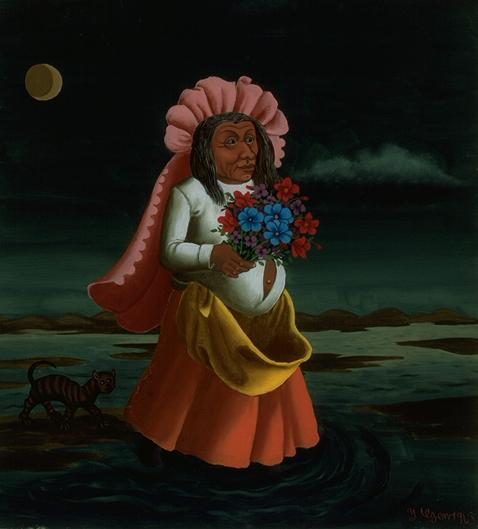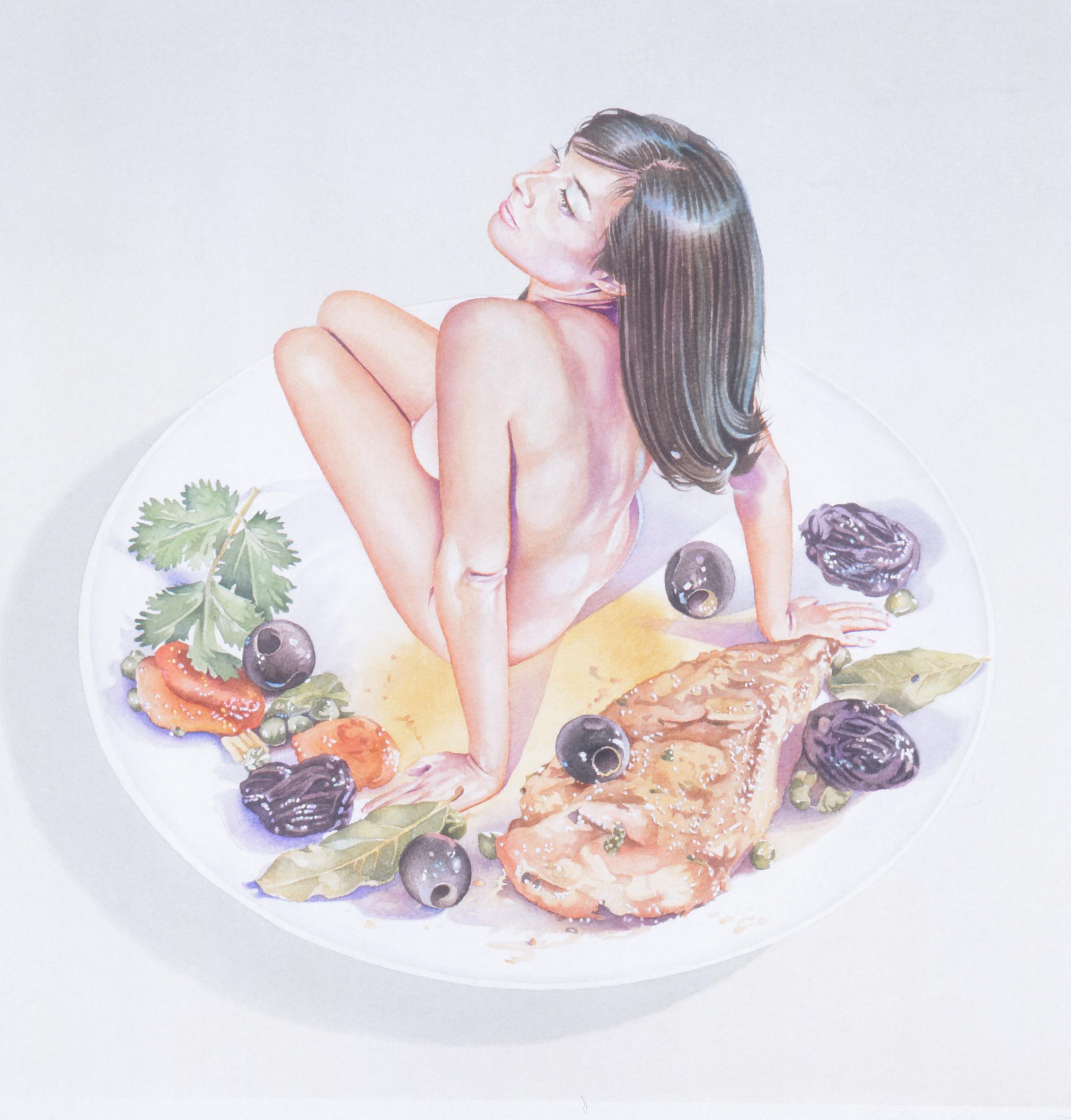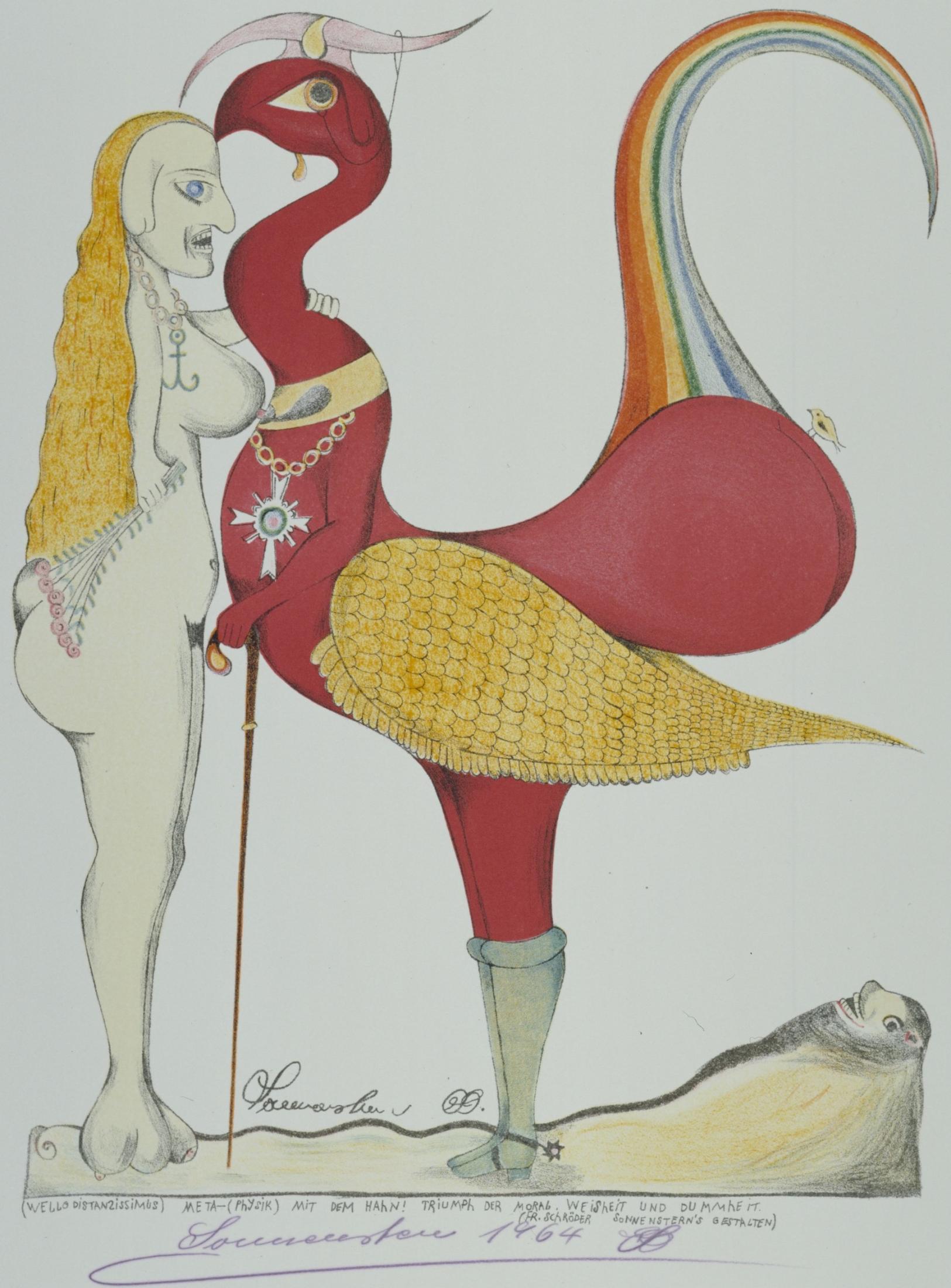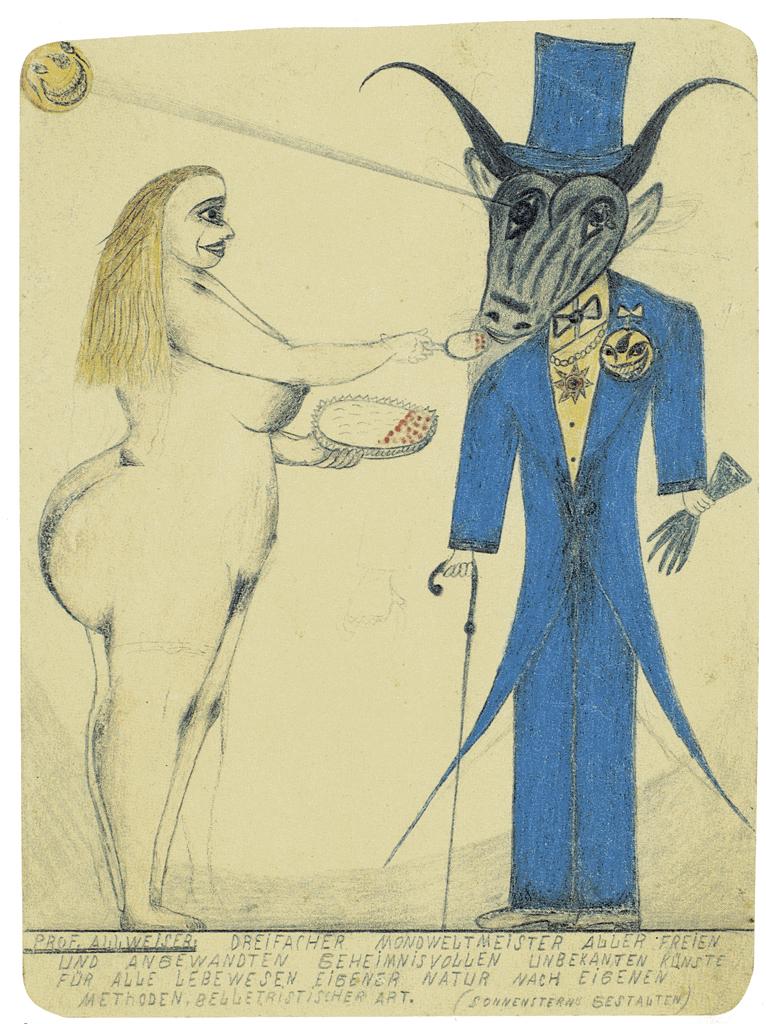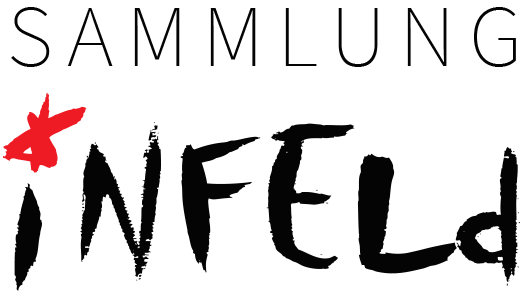WOMEN
In summer 2024, the Infeld Cultural Centre in Dobrinj, Krk Island, Croatia, will focus on the representation of women in art. The “Women” collection exhibition showcases the evolving perception of women in relation to the progressive detachment from traditional gender roles. Old ideas and patterns are reimagined and painted, including works from female perspectives. The collection features approximately 130 works by 47 artists.
Kicking things off are the Pop Art superstars Andy Warhol (USA, 1928-1987) with his iconic “Marylin” portrait and Allen Jones (UK, 1937) with the extraordinary table study for Stanley Kubrick’s film “Clockwork Orange”. Heroines, goddesses and wonder women are also the erotic power women depicted by Mel Ramos (USA, 1935-2018). The naked beauties gaze down coquettishly and seductively from their cosy Olympus, lending a friendly warmth to the forced alliance between the female body and mass-produced goods.
A strong female figure in Pop Art is the Austrian artist Kiki Kogelnik (1935-1997). She portrays women in fashionable outfits and in typical model poses. The poses are based on deliberate self-presentation, and the greatly simplified physiognomies of the protagonists draw from patterns of representation found in fashion magazines. In Kiki Kogelnik’s depictions of the beautiful and those who consider themselves beautiful, the ambiguous character of Pop Art is explicitly evident. On one hand, she is still surrounded by the veil of the European tradition of fine arts in the form of an idol of beauty. On the other hand, her figures are already entirely exposed to the distorting gazes of the compulsively voyeuristic society of media professionals, as is particularly pronounced in her adopted country of America.
The works of Surrealists such as Salvador Dali (Spain, 1904-1979), who is represented with three interpretations of Venus, and his Austrian artist friend Ernst Fuchs (1930-2015) provide a fascinating account of daily journeys into the realm of imagination. Another master painter of the Vienna School of Fantastic Realism, Wolfgang Hutter (Austria, 1928-2014), is characterised as a “voyeur” and “attentive dreamer, a scenarist of secret desires and longings”. He activates the viewer’s imagination by completing his dreamscapes with female figures.
Another highlight of the exhibition are works by Friedensreich Hundertwasser (Austria, 1928-2000). He dedicated one of them, “Irinaland over the Balkans”, to the Bulgarian actress Irina Maleeva. He interwove his longing and love into the landscape, thus uniting the human, the ephemeral, and the eternal, nature.
Unusual views of women are offered by Art Brut artists such as Philipp Schöpke (Austria, 1921-1998). The Gugging artist portrays the body as transparent, revealing the organs.
Another exceptional artist, Friedrich Schröder-Sonnenstern (Germany, 1892-1982), claimed to paint “the most beautiful, ugliest pictures in the world” and to be the “triple world champion of all arts”. His work illustrates his personal philosophy, his desires, and also his accusations against double standards, often accompanied by written annotations.
Female perspectives such as those of the Russian artist Bronislava Dubner (1924-2004) are another focal point of the “Women” exhibition. Dubner began drawing after her retirement and created an oeuvre of around 500 works. Her painting style was naive, with a very unique artistic signature. She was not only a visual artist, but also an actress and model and was crowned “Alternative Miss World” in London in 1998.
Martha Grünenwaldt (Belgium, 1910-2008) discovered her passion for painting in the early 1980s, when she was already 70 years old. She had no academic training, nor did she emulate renowned artists. In her youth, she travelled through Europe with her father, an itinerant musician, from one place to another. With these impressions in mind, she painted and drew her own fairytale world.
Mara Puškarić-Petras (Croatia, 1903-1998) also began painting late, at the age of 60. She quickly developed her distinctive style. With a fine poetic sense, she created a reality that reflects both the harsh reality of her difficult widowhood and the details of her dreams. Love, warmth and tenderness permeate her work.
In the works of another Croatian naive artist, Franjo Klopotan (1938-2019), phantasmagoria is strongly pronounced. Monstrous fish and butterflies with female features float over bucolic landscapes as symbols of a farmer’s fear of the unknown. His poetic world of mild horror is rooted in folk legends and simultaneously reflects children's fantasy. Klopotan's bestiary meets the bizarre requirements of the Surrealists.
The work of the most famous among the naive artists, Ivan Generalić (Croatia, 1914-1992), captivates with its maximum intensity of colour and primitivism of form. He gives viewers the opportunity to return to childhood, to move freely like a bird in nature. He succeeded in finding themes that are simultaneously ancient and new, and that are interesting to people all over the world.
Petar Smajić (Croatia, 1910-1985) is represented with minimalist wooden sculptures. He created his first figures at the age of 17 while herding sheep. Initially, he depicted historical figures, such as fearless horse riders, and later he portrayed the inhabitants of the rocky Dalmatian karst: tall, upright, with typical headwear.
The female body was also an inspiration for instrument makers. The first violins were made around 1550 in Cremona and Brescia in the Italian region of Lombardy. The body is modelled on the female body and the shape has hardly changed since then.
The exhibition is rounded off with a violin, an instrument that was also regarded as a symbol of the female body in the Dutch Baroque period.
The Infeld Collection
Peter Infeld (1942-2009) and his mother Margaretha Infeld (1904-1994) began to collect art in the mid-1960s.
The Vienna School of Fantastic Realism, naive art from Croatia, Pop Art, Buddhist meditation paintings from Tibet (so-called "Thangkas") and Art Brut are the main focus of the Infeld collection. In order to make the works accessible to a broader public, patron of arts Peter Infeld has built representative cultural centers in Halbturn in Burgenland and in the idyllic village of Dobrinj on the Croatian island of Krk. In total, more than 120 exhibitions were held free of charge at both locations.
The company Thomastik-Infeld GmbH
The traditional Viennese company Thomastik-Infeld is one of the three most important string producers worldwide. The company produces around 3000 different strings and is the world market leader in some areas. The strings have been handmade.
Founded in 1919, the company had 20 employees after the Second World War. To date, this number has increased tenfold. Exports go to more than 95 countries. Following the death of Peter Infeld in 2009, his widow, Croatian-born Zdenka Infeld, continues the family's long business and art collecting tradition.
Exhibition dates
Duration: The exhibition "Women” can be seen from July 7 to September 29, 2024.
Venue: Infeld Cultural Center, Dobrinj, Island of Krk, Croatia
Opening hours: Open daily except Monday
July and August - 10 a.m. to 1 p.m. and 6 p.m. to 10 p.m.
September – 10 a.m. to 1. p.m. and 5 p.m. to 9 p.m.
Free admission
Works: Approx. 130 oil and acrylic paintings, drawings, sculptures and music instruments.
Artists: Max Ackermann, Massimo Campigli, Marc Chagall, Salvador Dali, Puppe Denk, Bronislava Dubner, Georg Eisler, R. Faios, Tone Fink, Ernst Fritsch, Adolf Frohner, Ernst Fuchs, Ivan Generalić, Mato Generalić, Alberto Giacometti, George Grosz, Martha Grünenwaldt, Johann Hauser, Katarina Henc, Tobias Hermeling, Alfred Hrdlicka, Friedensreich Hundsertwasser, Wolfgang Hutter, Allen Jones, Franjo Klopotan, Kiki Kogelnik, Fritz Koller, Ivan Lacković-Croata, Miye Lee, Andre Masson, Andrei Melnikov, Mara Puškarić-Petras, Arnulf Rainer, Mel Ramos, Bernhard Resch, Franz Ringel, Arnold Schmidt, Philipp Schöpke, Friedrich Schröder-Sonnenstern, Rudolf Schwaiger, Sava Sekulić, Petar Smajić, Josef Sticner-Millin, Slavko Stolnik, Nada Švegović-Budaj, August Walla, Andy Warhol
Inquiries:
Dr. Yordanka Weiss
Curator of the Infeld collection
Mobile: + 43 664 465 66 66
Phone: + 43 1 545 80 46
Email: [email protected]
www.infeld.net
Press Photos
